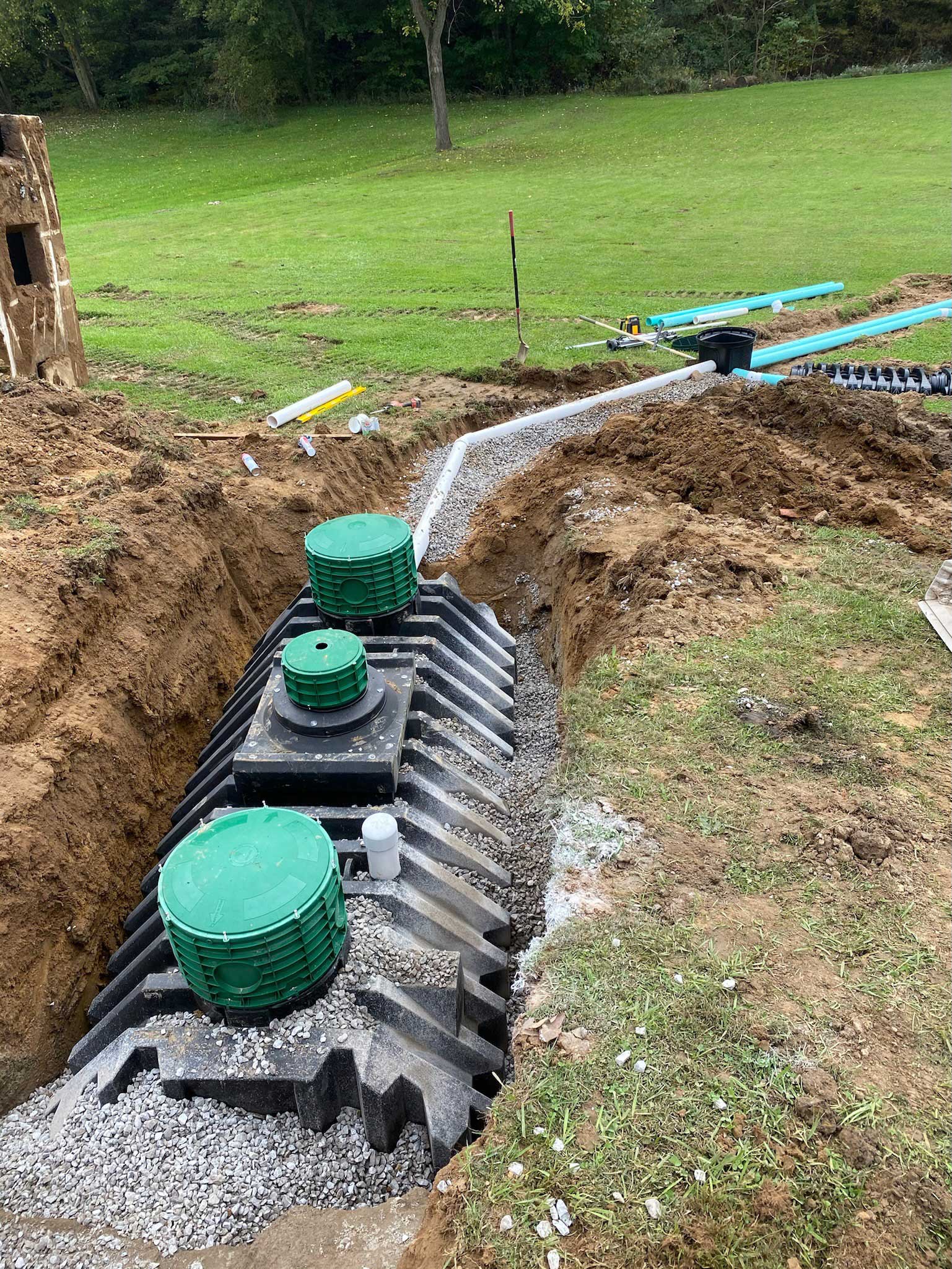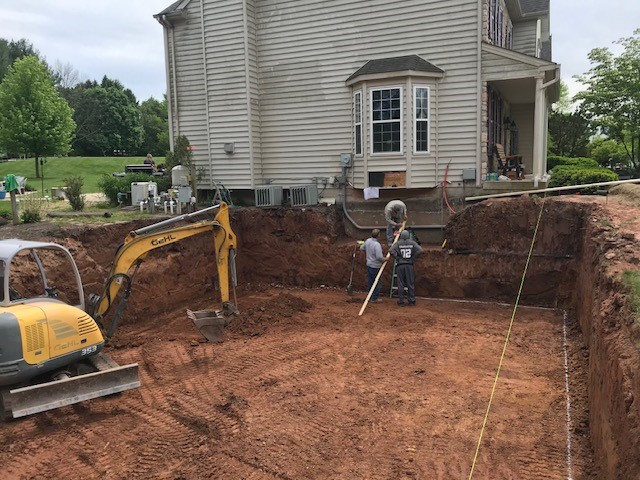Septic Ohio - Comprehensive Septic System Services in Ohio
Septic Ohio - Comprehensive Septic System Services in Ohio
Blog Article
Introducing the Art of Excavation: Pro Tips for Safe and Productive Digging
As soil is turned and earth is moved, the details of excavation disclose themselves, demanding a keen understanding of tools, dirt composition, safety procedures, and environmental factors to consider. The know-how needed to browse these elements successfully can mean the distinction between a successful excavation task and a potential calamity.
Relevance of Appropriate Devices
To make certain the security and effectiveness of any type of excavation task, using the ideal equipment is extremely important. Excavation jobs vary in range and intricacy, varying from tiny residential landscaping jobs to large-scale building endeavors.
These functional devices come in numerous dimensions to fit various job demands. Tiny excavators are perfect for smaller tasks, while larger excavators take on a lot more considerable jobs efficiently.
Besides excavators, other essential tools consists of dump trucks, excavators, and trenchers. Dump trucks are necessary for removing and transferring excavated products, while plates are used for excavating deep and slim trenches. Bulldozers stand out in jobs that require pushing big amounts of dirt or particles. By buying the ideal equipment, excavation jobs can be finished safely, promptly, and with precision.
Understanding Dirt Structure
An extensive understanding of dirt structure is fundamental for performing excavation tasks with precision and safety and security. Recognizing the various sorts of soil is important as it directly influences excavation approaches, equipment option, and total job performance. Dirt structure normally includes four main parts: sand, silt, clay, and raw material. Each part has one-of-a-kind properties that affect just how soil responds to excavation processes.
Sand bits are the biggest and offer excellent drain but provide little communication. Silt particles are smaller than sand however bigger than clay, supplying modest drainage and cohesion. Clay fragments are the tiniest and offer high cohesion yet bad drain. Raw material, such as decomposing plant product, impacts soil fertility and security.
Before commencing excavation, conducting dirt examinations to establish its composition and attributes is vital. This info helps in picking the appropriate equipment, carrying out precaution, and creating excavation techniques tailored to the details dirt problems - lancaster excavation. By understanding soil structure, excavation experts can improve project end results while making sure security and adherence to best techniques
Safety And Security Actions and Methods
Recognizing dirt make-up is the cornerstone whereupon safety actions and procedures for excavation projects are developed, making certain the wellness of employees and the success of the undertaking. When it comes to safety and security throughout excavation, there are a number of vital actions that must be applied to mitigate dangers and stop crashes.
Primarily, before any digging begins, a complete evaluation of the site must be performed to recognize any kind of potential hazards such as underground utilities, unsteady dirt problems, or neighboring frameworks that can pose a threat. It is crucial to have a proficient individual oversee the excavation procedure to ensure that all security protocols are complied with strictly.
Furthermore, all employees included in the excavation here must be correctly educated in secure digging methods and the correct procedure of devices. Individual protective devices (PPE) such as tough hats, high visibility clothes, handwear covers, and safety boots ought to be put on in any way times to minimize the danger of injuries. excavating ohio. Normal safety conferences and tool kit talks should additionally be conducted to maintain all workers notified about prospective hazards and enhance safe job techniques. By adhering to these precaution and methods, excavation projects can be completed effectively and without incident.
Effective Excavation Preparation
When getting started on an excavation task, precise planning is essential to guarantee efficiency, security, and effective outcomes. Effective excavation planning includes a number of key actions that are essential for the smooth implementation of the task.
As soon as the site assessment is total, the following action is to produce a clear timeline and routine for the excavation tasks. This consists of figuring out the series of jobs, tools demands, and workforce allowance. Correct organizing assists stay clear of delays and makes certain that the project remains on track.

In addition, communication among all staff member is critical throughout the preparation phase. Clear regulations, routine updates, and reliable control are vital for an effective excavation project. By investing time and initiative in precise planning, excavation teams can considerably enhance productivity, minimize risks, and attain effective end results.

Managing Ecological Considerations
With increasing focus on ecological sustainability in building practices, taking care of ecological considerations has actually ended up being an essential facet of excavation jobs. Excavation tasks have the prospective to impact the surrounding setting through dirt erosion, sediment runoff, environment disruption, and contamination of water resources. To reduce these risks, it is essential to apply finest practices that focus on environmental protection.

Moreover, correct waste management is important to protect against soil and water contamination. Applying procedures for the disposal of dangerous materials, recycling of waste materials, and decreasing using dangerous chemicals can considerably lower the environmental impact of excavation jobs. By integrating these techniques right into excavation planning and execution, building and construction companies can ensure that their projects are not only risk-free and effective however also environmentally liable.
Final Thought
Finally, mastering the art of excavation requires a comprehensive understanding of proper tools, dirt composition, security measures, and reliable planning. By adhering to these standards and taking into consideration ecological variables, excavations can be performed securely and effectively. It is crucial to prioritize safety and security and performance in every excavating task to ensure successful end results.
As dirt is turned and planet is moved, the intricacies of excavation disclose themselves, demanding a keen understanding of tools, soil make-up, safety methods, and environmental factors to consider.To ensure the safety and efficiency of any kind of excavation project, look at these guys using the ideal devices is vital.A detailed grasp of soil structure is essential for executing excavation projects with accuracy and safety. Comprehending the various types of soil is critical as it straight impacts excavation methods, tools selection, and general project effectiveness. By recognizing soil composition, excavation experts can boost task outcomes while making sure safety and security and adherence to ideal practices.
Report this page